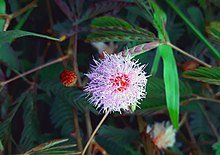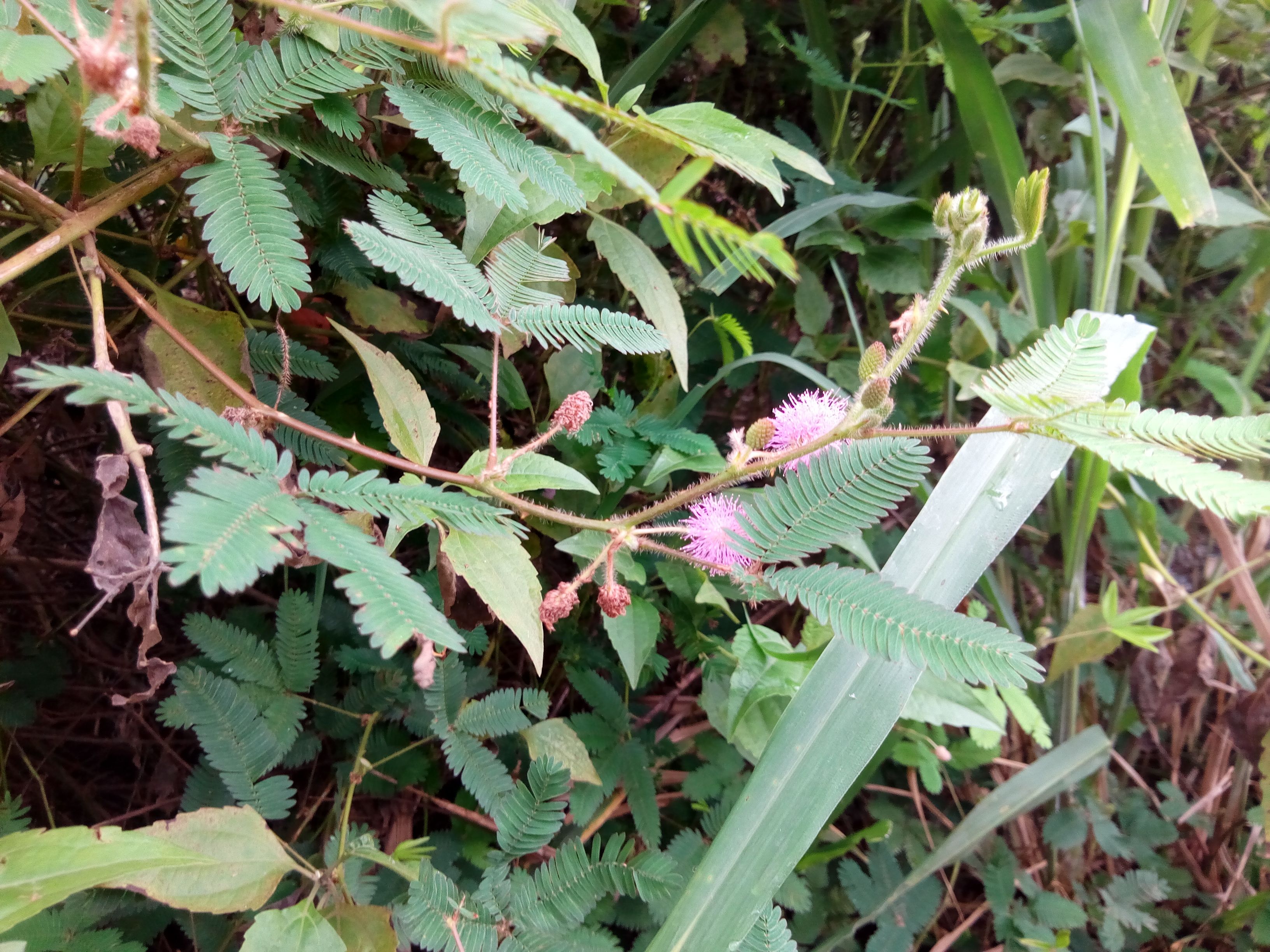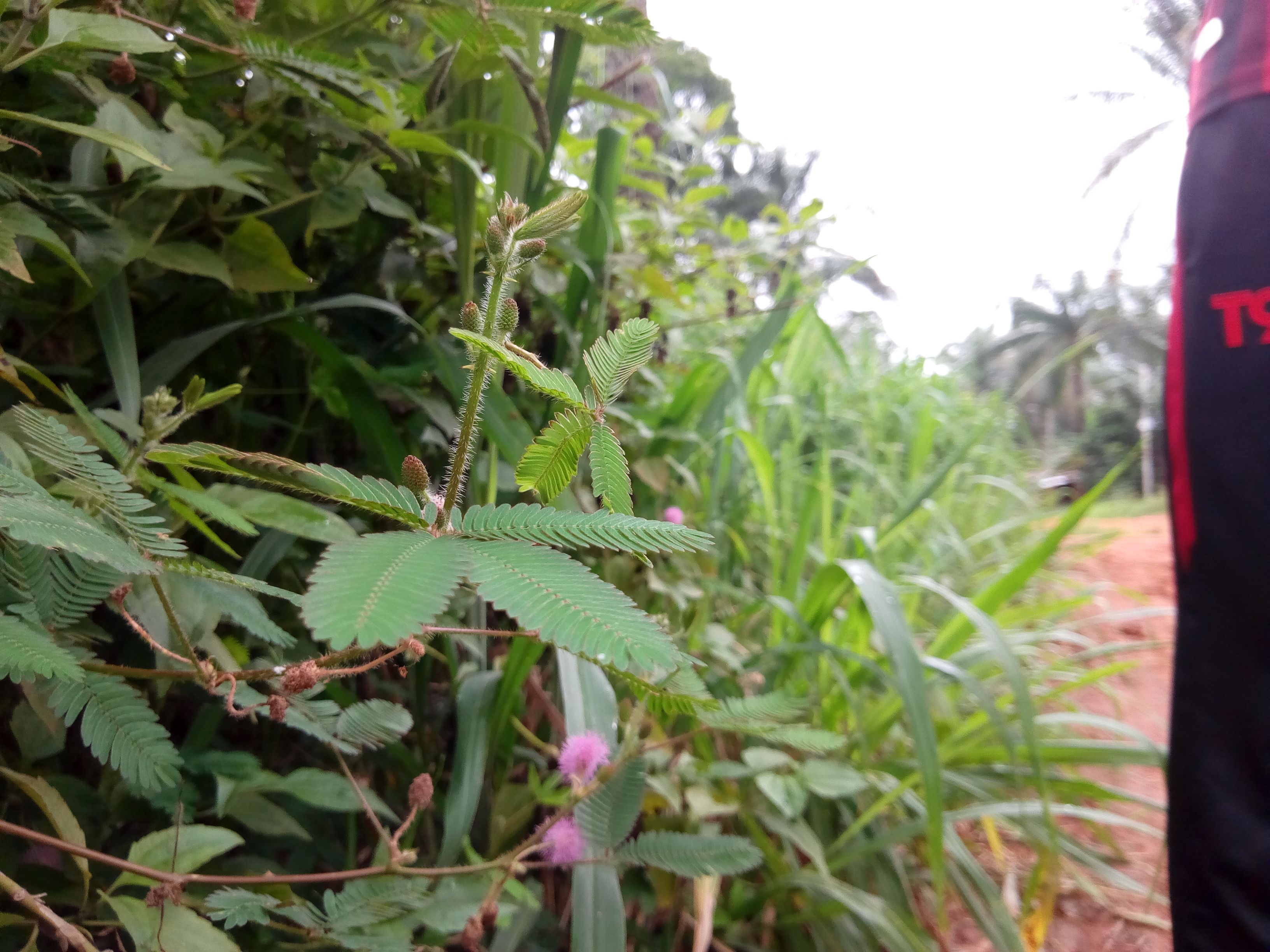THE PLANT THAT FEELS

The Igbo’s popularly call it “touch and die”. It is a plant that is very reactive to touch or external stimuli.
I have known the plant right from my secondary school days on Jss1, and then I knew about it from my basic science teacher. I went once to his house, while walking around in the compound I noticed a particular plant that kept on closing it leaves inward as we passed.
I got curious and asked my teacher for the plant’s details. He called it “The Mimosa Plant”.
Today I came across the same plant again at my uncle’s house at nnewi and decided to make a post about it.

Picture Credit: By me
THE MIMOSA
Scientifically know as “Mimosa Pudica” is a plant species native to South and Central America, but now pantropical. Now found in Asia, southern part of the United States. It has been introduced to many other regions and is regarded as an invasive species in Tanzania, South Asia and South East Asia and many Pacific Islands.
It has also been introduced to Ghana, Nigeria, Seychelles and Mauritus but is not regarded as invasive in those places.
It derives its name from the latin word “pudica” meaning shy, bashful or shrinking, hence the names Sensitive Plant, Sleepy Plant, touch-me-not* and the likes. It is a creepy annual or perennial flowering plant of the pea/legume family (Fabaceae) often grown for its curiosity value.
Its compound leaves fold inward when touched or shaken, defending themselves from harm and reopen them a few minutes later.
Mimosa Pudica was described by Carl Linnaeus is Species Plantarum in 1753.
PLANT DESCRIPTION
The stem of the plant is erect when young and becomes creeping or trailing with age. The stem is also slender and sparsely or at times densely prickly.

MOVEMENT OF THE PLANT
It is well known for its rapid movement mostly in response to any form of external stimuli. Like most plants, it undergoes changes in leaf orientation termed “sleep” or nyctinastic movement. The leaves close at night during darkness and reopens during day time.
Video Credit: By me from Infinix Hot 5
The leaflets also close when stimulated by touch, shake or blowing. These types of movements have been termed Seismonastic Movements.
The Physics and Chemistry behind the plants movement:
The stimulus is transmitted as an action potential from a stimulated leaflet to the leaflets swollen base and from there to the pulvini of the other leaflet which runs along the length of the leaf’s rachis. The action potential the passes into the petiole and finally to the large pulvinus at the end of the petiole, where the leaf attaches to the stem.
The action potential causes potassium ions to flow out from the vacuoles of cells in the various pulvini. This causes water to flow out from those cells by osmosis through aquaporin channels, making them lose turgor, which is the force that is applied onto the cell wall by water within the cell. Differences in turgidity in different regions of the leaf and stem results in the opening and closing of the leaf. This stimulus can also be transmitted to other nearby leaves on the same plant.
NATURAL PREDATORS
The Mimosa Pudica has several predators such as the Spider Mite and the Mimosa Webworm.
These two insects wrap the leaflets in webs that hinder the responsive closing.
The Mimosa Webworm particularly has two species that arise at different seasons. This makes prevention difficult and requires proper timing of insecticides application to avoid aiding other predators.
NATURAL ADVANTAGES
PHYTOREMEDIATION
According to the Greeks was the process of restoring balance to something, in this case the soil. This refers to technologies that clean up the soil, air and water contaminated with hazardous contaminants.
The Mimosa Pudica does this art of balancing to the soil for free.
Mimosa Pudica has been tested and found to significantly extract heavy metals such as copper, tin, lead and zinc from the soil in places where these metals quantity are huge in the soil.
This not only helps to reduce the pollution in the soil but helps to lessen the toxic composition of soil.
NITROGEN FIXATION
Mimosa Pudica can form root nodules in which nitrogen-fixing bacteria can live in. The bacteria are able to convert atmospheric nitrogen (which plants can’t use) to a form plants can use.
This is essential as nitrogen is a vital element needed for plant growth and reproduction. Nitrogen is also a component of chlorophyll which is used in plant photosynthesis.
CHEMICAL CONSTITUENTS
This plant contains the toxic Alkaloid Mimosine which have been found to have antiproliferative and apoptotic effects. Aqueous extracts of the roots of the plant have shown significant neutralizing effects on the lethality of the venom of the Monocled Cobra. It appears to inhibit the myotoxicity and enzyme activity of the cobra venom.
REFERENCES
• Phytoremediation
• Thigmonasty and Seismonasty
• Mimosa Pudica
